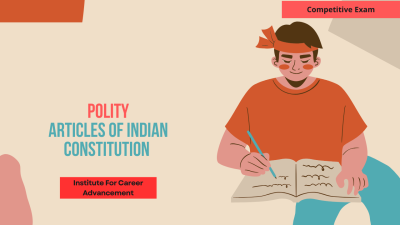Revolutionary Activities: Bengal, Punjab , Maharashtra
Revolutionary Activities in Bengal, Punjab, and Maharashtra were crucial in the struggle for India's independence, marked by the rise of radical groups and individuals who resorted to armed resistance against British colonial rule. Bengal: Bengal became a hotspot for revolutionary activities in the late 19th and early 20th centuries, with groups like Anushilan Samiti and Jugantar promoting armed resistance. Prominent revolutionaries such as Subhas Chandra Bose, Khudiram Bose, and Surya Sen led attacks on British officials and institutions. The Swadeshi Movement (1905) also contributed to the rise of revolutionary sentiments in Bengal, which were further fueled by the repression following the 1905 Partition of Bengal. Punjab: In Punjab, revolutionary activities were driven by discontent over British policies and economic exploitation. Bhagat Singh, Chandrashekhar Azad, and Lala Lajpat Rai were key figures. The Jallianwala Bagh massacre (1919) spurred widespread anger, and groups like the Ghadar Party advocated for violent uprisings against the British. The revolutionary youth in Punjab played an instrumental role in the formation of radical nationalist organizations. Maharashtra: Maharashtra was home to several key revolutionary leaders and movements. The state saw the rise of Veer Savarkar, who advocated for Hindu nationalism, and Bal Gangadhar Tilak, who led the Home Rule Movement. The bombing of the Viceroy's train and attacks on British officials were among the violent tactics employed by groups such as Abhinav Bharat and the Revolutionary Youth League. Maharashtra's revolutionary activities were significant in fostering the radical wing of India's independence movement. These regions contributed to the broader nationalist resistance by offering a radical, often violent alternative to the non-violent methods of the Indian National Congress. ব্রিটিশ ঔপনিবেশিক শাসনের বিরুদ্ধে সশস্ত্র প্রতিরোধের আশ্রয় নেওয়া মৌলবাদী গোষ্ঠী ও ব্যক্তিদের উত্থানের দ্বারা চিহ্নিত ভারতের স্বাধীনতা সংগ্রামে বাংলা, পাঞ্জাব এবং মহারাষ্ট্রে বিপ্লবী কার্যকলাপ অত্যন্ত গুরুত্বপূর্ণ ছিল। বাংলাঃ ঊনবিংশ শতাব্দীর শেষের দিকে এবং বিংশ শতাব্দীর গোড়ার দিকে অনুশীলন সমিতি এবং যুগান্তরের মতো গোষ্ঠীগুলি সশস্ত্র প্রতিরোধের প্রচার করে বিপ্লবমূলক ক্রিয়াকলাপের জন্য বাংলা একটি হটস্পটে পরিণত হয়েছিল। সুভাষ চন্দ্র বসু, খুদিরাম বসু এবং সূর্য সেনের মতো বিশিষ্ট বিপ্লবীরা ব্রিটিশ কর্মকর্তা ও প্রতিষ্ঠানগুলির উপর আক্রমণের নেতৃত্ব দিয়েছিলেন। স্বদেশী আন্দোলন (1905) বাংলায় বিপ্লবী অনুভূতির উত্থানেও অবদান রেখেছিল, যা 1905 সালের বঙ্গভঙ্গের পর দমন-পীড়নের দ্বারা আরও উজ্জীবিত হয়েছিল। পঞ্জাবঃ পঞ্জাবে ব্রিটিশ নীতি ও অর্থনৈতিক শোষণ নিয়ে অসন্তোষের কারণে বিপ্লবী কার্যকলাপ পরিচালিত হয়েছিল। ভগত সিং, চন্দ্রশেখর আজাদ এবং লালা লাজপত রাই ছিলেন প্রধান ব্যক্তিত্ব। জালিয়ানওয়ালাবাগ গণহত্যা (1919) ব্যাপক ক্ষোভের জন্ম দেয় এবং গদর পার্টির মতো দলগুলি ব্রিটিশদের বিরুদ্ধে হিংসাত্মক বিদ্রোহের পক্ষে সওয়াল করে। পাঞ্জাবের বিপ্লবী যুবক-যুবতীরা মৌলবাদী জাতীয়তাবাদী সংগঠন গঠনে গুরুত্বপূর্ণ ভূমিকা পালন করেছিল। মহারাষ্ট্রঃ মহারাষ্ট্রে বেশ কয়েকজন প্রধান বিপ্লবী নেতা ও আন্দোলন ছিল। রাজ্যটি বীর সাভারকরের উত্থান দেখেছিল, যিনি হিন্দু জাতীয়তাবাদের পক্ষে ছিলেন এবং বাল গঙ্গাধর তিলক, যিনি স্বশাসন আন্দোলনের নেতৃত্ব দিয়েছিলেন। ভাইসরয়ের ট্রেনে বোমা হামলা এবং ব্রিটিশ কর্মকর্তাদের উপর হামলা ছিল অভিনব ভারত এবং বিপ্লবী যুব লীগের মতো গোষ্ঠীগুলির দ্বারা ব্যবহৃত সহিংস কৌশলগুলির মধ্যে অন্যতম। ভারতের স্বাধীনতা আন্দোলনের মৌলবাদী শাখাকে গড়ে তোলার ক্ষেত্রে মহারাষ্ট্রের বিপ্লবী কার্যকলাপ উল্লেখযোগ্য ছিল। এই অঞ্চলগুলি ভারতীয় জাতীয় কংগ্রেসের অহিংস পদ্ধতির একটি মৌলবাদী, প্রায়শই হিংসাত্মক বিকল্প প্রস্তাব করে বৃহত্তর জাতীয়তাবাদী প্রতিরোধে অবদান রেখেছিল।
English
Last updated
Thu, 20-Feb-2025



















